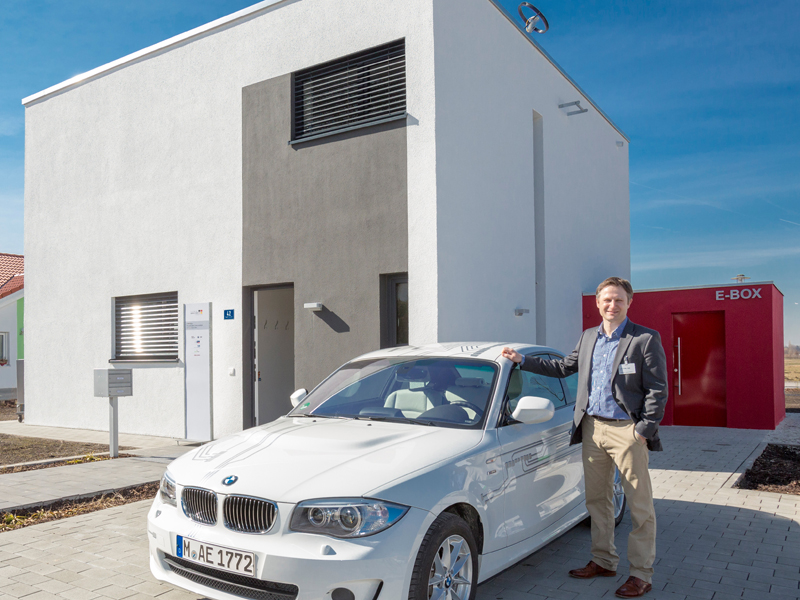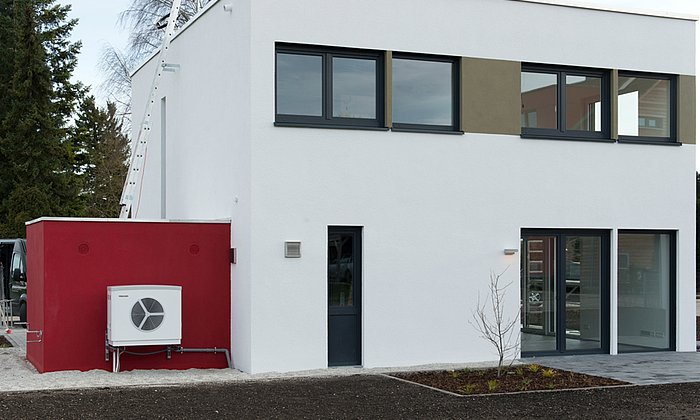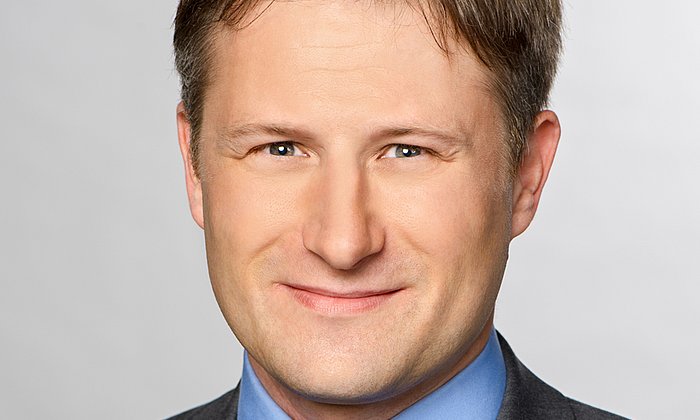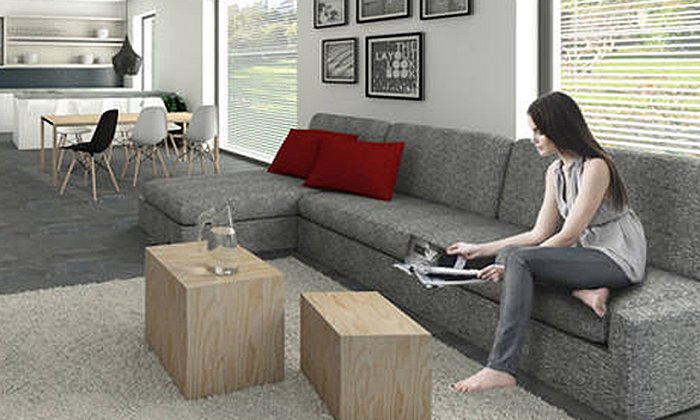Conclusion of "e-MOBILie" project
Energy management: Highly intelligent homes of the future

Energetically active, flexible and with an intelligent network — these are the characteristics which an energy-plus house of the future should fulfill. Scientists at the Technical University of Munich (TUM) and the project partners BMW and SMA Solar Technology AG have developed an energy management system which aims to make this possible. In the community of Hallbergmoos to the north of Munich they tried out the concept in an energy-plus house with an electric car. The house was built by the construction company Krieger + Schramm (Dynahaus), also a partner in the project.
In the research project entitled "e-MOBILie – Energieautarke Elektromobilität im Smart-Micro-Grid" (e-MOBILie – energetically self-sufficient electromobility in a smart micro-grid), the house itself was to become a source of energy. For this purpose, a photovoltaics array was installed on the roof of the building. Electricity that was not consumed directly was used to charge a battery storage unit. Furthermore, using electricity generated from the solar panels, a heat pump also generated thermal energy which could also be stored or used directly for heating. A special feature of this concept was that the charging of the electric car was integrated into the building and the energy management system.
In order to observe how the energy management system was used in daily life, the researchers took numerous measurements during a demonstration phase lasting from January 2015 to June 2016. During that period, the four members of the Hagn family lived in this house. Franz Hagn, Professor for Structural Membrane Biochemistry at the TUM, explains his motivation for taking part in the project: "I think that the combination of decentralized energy production and electromobility could become widespread within a few years, and we would like to make our humble contribution to this phenomenon."
System plans power consumption
Appliances which consume large amounts of power such as the washing machine, dryer, and dishwasher were connected to the energy management system during the real-world test. The inhabitants had the option of specifying a time window in the energy management system during which certain devices would be started. The intelligent system is able to identify the points in time at which cheap solar energy or night tariffs can be exploited. Doing so reduces the load on the power grid and costs. Where required, the devices can also be started manually at any time.
From the fall of 2015, the heat pump was also connected to the system. It was possible to switch it on in advance, thereby using solar power to store up heat energy when the battery storage unit was full. By doing so, the house's own consumption of solar power could be maximized.
Overall, the Hagns were satisfied with the user-friendliness of the system. However, there were also suggestions for improvement: "It is a little time-consuming having to adjust the running times of the individual devices", explains Franz Hagn. "And if you attempt to select a time window that has already begun, the device only starts up a day later. You then have to go to the website to modify the settings."
Heat pump promises great potential
The evaluation of the data showed that, with the help of the energy management system, it was possible to use self-generated solar energy to increase the coverage of energy requirements by around 30 percent, particularly where charging the electric vehicle was concerned. This is a significant increase. If charging had taken place without the integrated management system, less than one percent of solar power would have been used for charging.
"The integration of the heat pump into the energy system near the end of the project term also showed great potential", explains project head Claudia Hemmerle from the Centre for Sustainable Building at the TUM. It allowed the running times of the heat pump to be configured mainly for the daylight hours, where energy was in plentiful supply. There is still potential for improvement, believes the engineer, by adding a drinking water heating and storage system.
More results of the real-world test phase:
- 64 % of the solar power generated was used by the house itself. The remaining 36 % was fed into the power grid.
- In reality, the amount consumed by the house itself covered 42 % of the total consumption requirements of the building, the measurement technology installed, and of the vehicle.
- Mathematically, the overall amount of power generated by the photovoltaic installation accounted for 81 % of total energy consumption per annum. If we discount the power consumed by the measurement equipment and the electric vehicle, the building would have a generation/consumption balance of 102 %, and hence an energy surplus of 2 %; i.e. the photovoltaic array produced 2 % more electricity than the operation of the building consumed.
With the Hagns not living in the house anymore, the energy-plus house will now be used by the construction company Krieger + Schramm as a new branch office. The TUM researchers will continue to collect measurement data in order to test new possibilities for optimization. However, this data will no longer be comparable to that obtained during the demonstration phase, as the house will no longer function as a residential building, but as an office.
About the project:
The energy-plus and storage house in Hallbergmoos was part of the research project "e-MOBILie – Energieautarke Elektromobilität im Smart-Micro-Grid" (e-MOBILie – energetically self-sufficient electromobility in a smart micro-grid) in collaboration with the construction company Krieger + Schramm (Dynahaus), the BMW Group, and SMA Solar Technology AG. The Centre for Sustainable Building and the Chair of Energy Economy and Application Technology at the TUM are part of the priority program TUM.Energy, the cross-faculty research initiative of the Munich School of Engineering (MSE).
Contact:
Dr. Claudia Hemmerle
Centre for Sustainable Building
Tel.: +49 89 289-23955
claudia.hemmerle@tum.de
www.znb.mse.tum.de
Technical University of Munich
Corporate Communications Center
- Stefanie Reiffert
- reiffert@zv.tum.de
- presse@tum.de
- Teamwebsite



